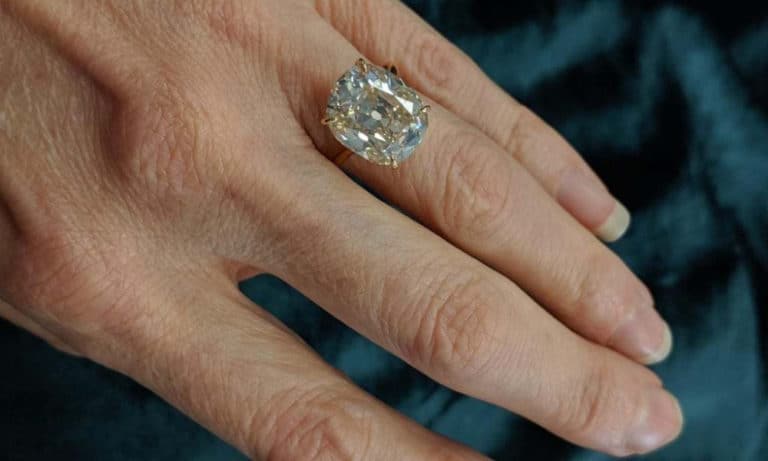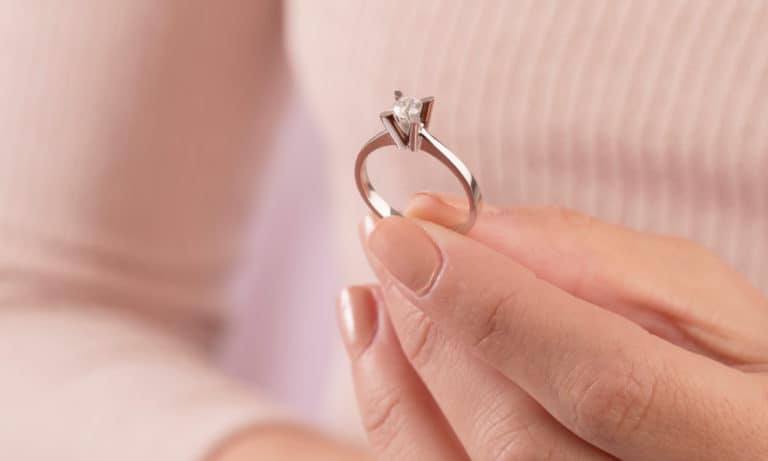
Ever been so fascinated by the incredible transformation of a raw gemstone into a sparkly, beautifully cut jewel that you said to yourself, “I would love to know how to do that”?
Well, today is your lucky day because we have prepared an in-depth guide that gives step-by-step instructions on how to cut gemstones to help you learn the ropes. And guess what? With the right attitude, you can actually make a living cutting gemstones! So let’s get to the nitty-gritty, shall we?
Materials Needed
- Raw gemstone
- Gemstone pre-shaping lap (spinning wheel)
- Dop stick
- Dopping wax
- Faceting lap
- Polishing lap
Step 1: Examine the Raw Gemstone
The first thing you need to do is to understand the shape of the raw gemstone you are working with. Gemstones will come in many different shapes. Some will still be in their natural form, also referred to as crystal habit, while others will have been broken during the mining process.
Usually, the shape of the raw crystal will determine how the finished piece will look like. Producing a cut that assumes the shape of the original stone helps minimize the wasted material. This in turn maintains the weight of the gemstone, which enables you to make more money from it.
For instance, it would make more economical sense to cut a short stubby stone into a round shape than it would to create the same shape from a long tourmaline pencil. You need to be able to maintain as much weight of the original gemstone as possible but still make accurate proportions.
If you are cutting purely to maintain weight and not taking into consideration important aspects like symmetry and beauty, the resulting shape will likely not be considered top grade. Plus bad cuts can get you ruining very good pieces of raw gemstones.
Step 2: Plan and Prepare to Cut
After you have carefully assessed the shape of the raw crystal and all the inclusions in it, you must think about how you will orient the cut. Decide where you want the table and pavilion to be.
One of the things you should pay attention to in this step is the number of flaws; you must remove any bad inclusions. You should also check for color banding and zoning, as these can affect how the table will be positioned and how the final stone will look like.
Step 3: Pre-forming the Gemstone
To do this, you will need a gemstone shaping spinning wheel primed with diamond powder. Simply grip the raw stone with your thumb and index finger and grind it using the spinning wheel. This will create the initial shape of the cut.
Next, apply some dopping wax to a dop stick and attach the gemstone to the stick. Then, connect the dopped rod to a handheld faceting tool.
Step 4: Start Faceting
Faceting is simply creating many tiny faces both on the pavilion and table of the raw gemstone. On the surface, faceting can look pretty easy but it is actually one of the hardest gem cutting skills to perfect.
To get started, replace the grinding wheel with a faceting lap. The faceting lap will be a much finer grinder coated with very fine diamond dust.
Place the raw stone at precise angles to create the different facets you wish to produce. Timing is paramount; you don’t want to spend too much time on one face and risk producing asymmetrical facets.
To create each facet individually on the pavilion and crown, apply the Height, Angle, Index (HAI) rule. Height will help control how deep each facet will be cut, the Angle will help determine the slant at which each facet will be cut, and the Index will control how individual facets will be placed around the shape.
The pavilion and crown are the two most important parts of a gemstone. They are designed to catch the light and reflect it within the stone and back to the eye.
The facets on the crown collect light from all directions and concentrating it on the pavilion. The pavilion then picks up this light and bounces it within the stone then back to the crown, which then sends it to the eye.
It’s important, however, to remember that different gemstones have different critical angles, also known as the refractive index. A critical angle is the minimum angle at which a facet sends the light back into the stone.
How you shape a facet’s angle will depend on the critical angle of the gemstone. Each angle will affect how much light a gemstone can reflect, which will ultimately affect the stone’s brilliance.
If you cut the pavilion too deep or too shallow, the resulting stone will not have as much brilliance as one whose pavilion is cut at the right depth. This is because, any light that enters the pavilion will be reflected outside of the critical angle, causing it to escape out of the gemstone.
Step 5: Polish the Gemstone
If you are content with your cut, you can go ahead and polish the gemstone. You will require a special polishing lap coated with very fine diamond dust. Polish each facet separately to a high sheen to give the stone a fine shine.
While the above steps may look easy, cutting gemstones is a technique that can take years to perfect.
Dangers Associated With Gemstone Cutting
During the Cutting Process

As exciting as gemstone cutting can be, there are various hazards that are involved with the process. Among the most common ones result from gemstone dust and loose debris.
Some of the debris that falls off the gemstones during the cutting process has been found to contain harmful chemicals that are hazardous or even deadly. These chemicals can cause serious illnesses like silicosis and silicotuberculosis to lapidaries who don’t wear protective gear during the cutting process.
Also, the water in the gem cutting equipment often sits for long periods of time and can foster mold and fungus. Gemstone cutters have even caught the legionnaires’ disease from inhaling the bacteria contained in such water.
It is therefore important that your wear a pair of gloves and a mask whenever you are working with gemstones.
Gloves will protect your hands from the contaminated water as well as any harmful chemicals that may be produced by the gemstone you are cutting. Letting these chemicals penetrate your skin can result in skin sensitivity or put you at risk of skin cancer.
When it comes to the mask, the type you wear is crucial. You will want to pick the most appropriate for the stone you are cutting. In most cases, a basic dust mask will get the job done. Just make sure it fits properly and does not have any holes where unclean air can sneak in.
The mask should also be able to filter out oil. Any mask graded as R or P will be great. If a mask is graded as R95, for instance, the letter ‘R’ indicates that the mask is oil-resistant and the number ‘95’ means it can keep out 95% of dust particles. If P is used instead of R, then it means that the mask is oil-proof.
Regardless, it is important that you know which gemstones produce harmful chemicals. That way, you will be able to bring the most appropriate protective gear.
Another danger to be on the lookout for while cutting gemstones is the chips that come off during the grinding process. Due to the high speed of the grinder, this debris may fly off right into your eye, tearing your cornea and causing blindness.
If you get a piece of stone into your eye, stop what you are doing immediately and go rinse the eye. But don’t wait until something enters your eye to get eye protective gear. Wear protective glasses before you start the cutting process; it will help keep all stray chips at bay.
After the Cutting Process

The vibrations from the gem cutting equipment can harm your hands or even your entire body over time. These machines have been found to lower blood circulation to hands and feet, resulting in hand pain and arthritis.
Do hand and leg exercises before and after cutting so you can perform better especially if you will be working for a long period. The hand exercises, in particular, will prevent the hands from getting stiff due to gripping the stone for a long time. And once you are done for the day, make sure to thoroughly wash your hands with soap to ensure no chemicals remain on your hands.
The Takeaway
The process of cutting gemstones involves five steps:
- Assessing the raw stone
- Planning the cut
- Pre-forming the stone
- Faceting
- Polishing
However, this is not a skill that one can learn overnight; even the highly-skilled lapidaries you see today have spent many years mastering it. The trick is to practice regularly and you too will eventually be able to produce symmetrical, brilliant, stunning pieces.
Got any questions about gemstones’ cutting? Feel free to ask in the comments section below.











